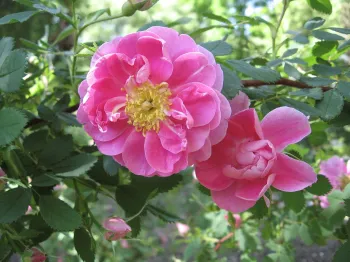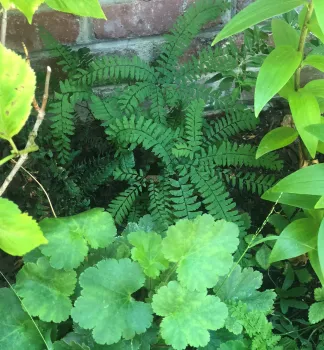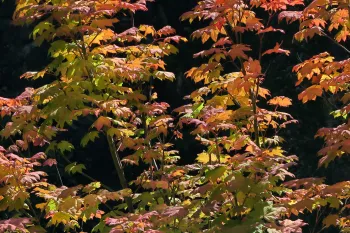We’ve all heard that native plants are the best for supporting local wildlife. But what about those non-native garden classics, like lilacs and irises? Well, you’re in luck: for every non-native plant, you’re sure to find one among California’s approximately 8,000 native plant species that has similar traits such as color, scent, and form.

While many cottage garden classics are irreplaceably iconic, a perfectly beautiful cottage garden can be made by swapping them for similar California natives. Some common cottage plants are already native to California, such as Yarrow (Achillea Millefolium), which comes in a range of colors including white, yellow, pink, red, and orange. Mock Orange (Philadelphus lewisii), famed for its lovely scent, is also native. For a similar form and coloring to lilacs, consider our native Ceanothus species, which are commonly called California Lilac for their resemblance to the non-native ornamental. While far more thorny than non-native garden roses, our native California Wildrose, Rosa californica, provides the same charming scent as cultivated roses; for a bloom more similar to garden roses, try the fuller-flowered variety ‘Plena.’ The pale purple blooms of California Aster (Symphyotrichum chilense) would make a wonderful replacement for non-native asters. And Baby Blue Eyes (Nemophila menziesii) or Western Houndstongue (Adelinia grandis) would make lovely alternatives to forget-me-nots (Myosotis latifolia), which are invasive in California. So many species of Salvia are native to California that they could be worthy of their own article! If you’re a stickler for color scheme, you’ll be happy to learn that California Poppies (Escholzia californica) come not only in orange, but in purple, red, pink, yellow, and white cultivars, such as the pastel ‘Thai Silk’ series. All the plants listed above can be grown in full sun with very little water once established (1-2x per month), except for Mock Orange and California Wildrose, which prefer watering 3x per month, and Western Houndstongue, which prefers full or partial shade.

If you enjoy the peacefulness of a classic shade garden, look no further than our array of shade-loving California natives. No shade garden is complete without ferns, and California is home to over 70 species, such as the delicate Five Finger Fern (Adiantum aleuticum), the lacy Lady Fern (Athyrum filix-femina), Western Sword Fern (Polystichum munitum), and the dramatic Giant Chain Fern (Woodwardia fimbriata). Lovers of columbine will be happy to discover our native Western Columbine (Aquilegia formosa), and iris lovers will be happy to discover our native Douglas Iris (Iris douglasiana), both of which thrive in shade. Additionally, multiple species of Heuchera, a shade plant beloved around the world, are native to California: try Heuchera micrantha or Heuchera maxima for attractive leaves year-round and spires of dainty flowers in late spring.

Turning our attention to trees and shrubs, there are a number of natives that are sure to please! Pacific dogwood (Cornus nuttallii) provides a similar look to saucer magnolias, and the white flower clusters of Pacific Ninebark (Physocarpus capitatus) remind me of white Hydrangeas. Two species of Rhododendron native to California are widely available in nurseries; Western Azalea (Rhododendron occidentale) and Pacific Rhododendron (Rhododendron macrophyllum) are sure to endear themselves to any fan of their Asiatic counterparts. Our native Vine Maple tree (Acer circinatum), which prefers moist shade, is a wonderful alternative to Japanese Maples. California Honeysuckle (Lonicera hispidula), which thrives in part shade and with low water, can be grown as a vine or shrub and would make a stunning alternative to non-native honeysuckles. Additionally, there are a number of native grasses for lovers of ornamental grasses to choose from, such as Foothill Sedge (Carex tumulicola), California Meadow Sedge (Carex pansa), Mendocino Reed Grass (Calamagrostis foliosa), and California Fescue (Festuca californica).
With the wide range of California native plants available, there’s a native that suits any look or need in the garden. So get out there and plant some California natives: your local ecosystem is sure to thank you for it!
By Emily Daane, November 1, 2025

